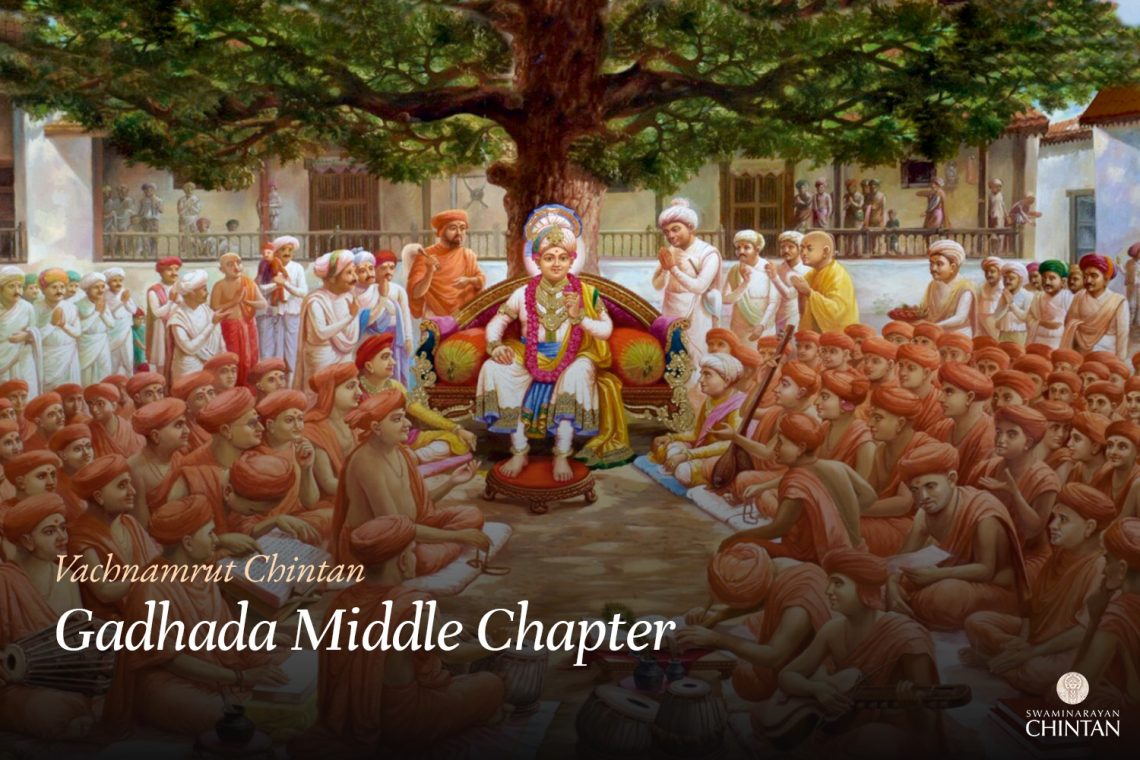Central Insights:
- The characteristics of daivi (divine) and asuri (demonic) souls.
Key Points:
- A daivi jiva (divine soul) perceives only the virtues of a devotee.
- An asuri jiva (demonic soul) perceives only the faults of a devotee.
Explanation:
In this Vachanamrut, Shreeji Maharaj asks Muktanand Swami a question: “When someone perceives a fault in a devotee, do they see the same number of faults as they initially perceived, or do they perceive more?” Muktanand Swami responds that they perceive the same faults. To this, Maharaj says, “You haven’t grasped my question properly. If only the same faults are perceived, then how can it be said that a fault was perceived? It is because of external influences such as place, time, actions, and association that one’s intellect becomes perverted, leading one to perceive more faults. The main characteristic of a demonic disposition is that one sees only faults in a devotee of God and does not perceive their virtues. Sometimes, one even perceives faults in a devotee’s acts of kindness.”
For instance, Duryodhan once went to disturb the Pandavas while they were in exile in the forest. There, he was defeated and captured by Chittrarath Gandharva, and upon Yudhishthir’s command, Arjun freed Duryodhan. Yet, instead of seeing virtue in this act, Duryodhan perceived it with vakradrishti (a crooked vision), imagining faults where none existed.
A demonic soul is characterized by a tendency to seek out faults, especially in devotees of God. If a non-devotee has faults, they are tolerable, but faults in a devotee are intolerable. Conversely, the pinnacle of divinity or devotion is to perceive only virtues in others, no matter the situation. For example, when Bhagwan Ram sent Sita into exile without fault, Sita did not hold any negative thoughts. She did not even question why, despite enduring so much suffering, she was still sent to the forest. Not only did she refrain from perceiving any fault, but she did not even expect justice. Instead, she perceived virtue, believing that Raghunathji, out of His immense compassion, sent her to the forest for the sake of public opinion but must have felt deep sorrow Himself. Thus, she sent a message through Lakshman, saying that she is content and engaged in devotion to God, and that Ram should not be distressed by her suffering. This is considered the pinnacle of devotion and divinity.
Maharaj further explains that anyone who has previously been in the company of great saints or had the darshan of God will see their own faults but will not perceive faults in other devotees of God. Therefore, the fruit of all spiritual endeavors is the association of satpurushas (true saints) and the darshan of God. Moreover, seeing one’s own faults is itself a fruit of satsang (holy fellowship) and is even a step beyond that. However, even after becoming a devotee, this realization remains rare.
Maharaj states that a demonic soul will never perceive any faults in themselves, which is the primary characteristic of demonic nature. Even if a demonic soul remains in satsang or in the company of Santo, they will remain unchanged, like Kalanemi, Ravan, or Rahu. Ravan came to Sita’s hut dressed as a sadhu (ascetic). Rahu, disguised as a deity, sat between the sun and moon. These were mere disguises meant to deceive; they had no real sadhu-like or divine qualities internally. Just as Ravan’s actions brought further sorrow to Sita, and Rahu still causes eclipses for the sun and moon, their presence only brings harm. Therefore, Maharaj says that even if such individuals remain in satsang, they are not truly influenced by it.
On the other hand, a confirmed devotee of God perceives only their own faults and never those of another devotee.
Glossary
| Daivi Jiva – A divine soul A soul characterized by perceiving only virtues in others, especially devotees of God. |
| Asuri Jiva – A demonic soul A soul characterized by perceiving only faults in others, especially in devotees of God. |
| Vakradrishti – A crooked vision The tendency to see faults or distort kindness and good actions as flaws. |
| Satpurush – A true saint or spiritual guide |
| Satsang – Holy fellowship |

